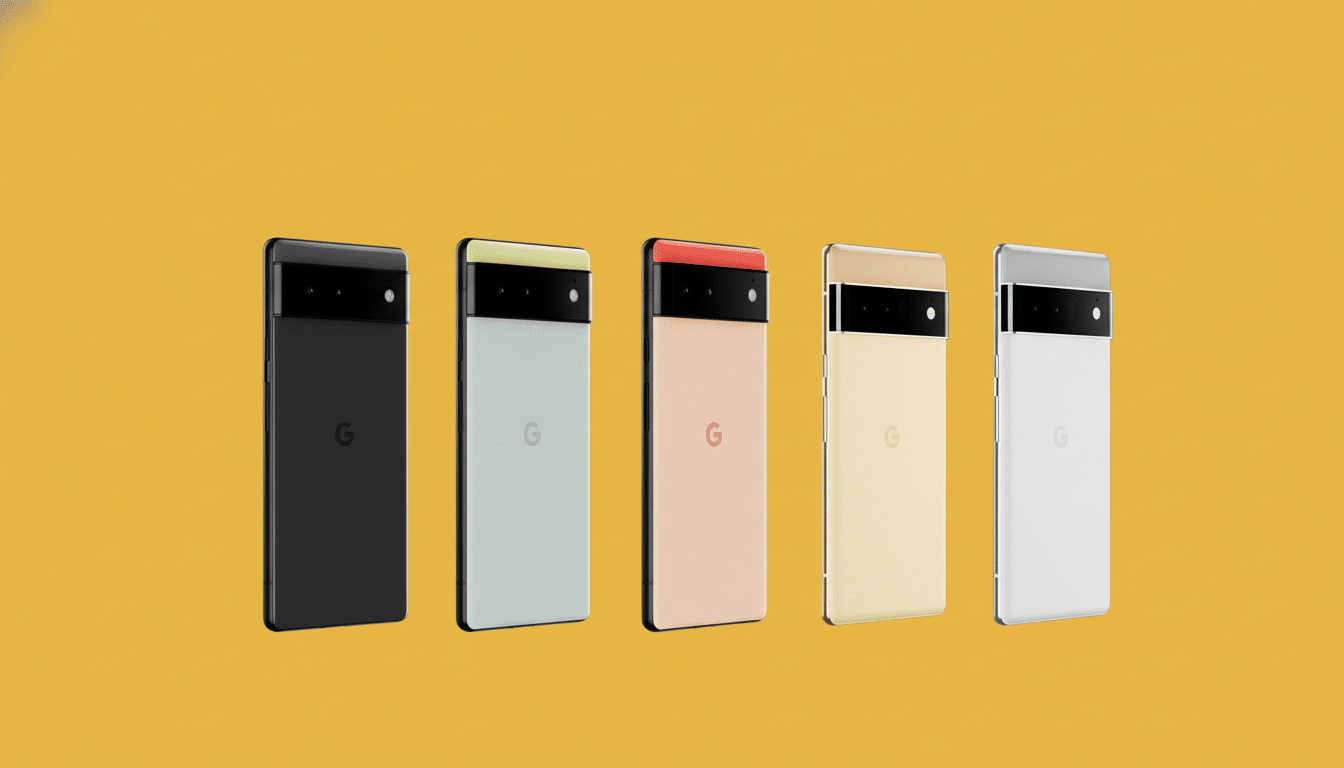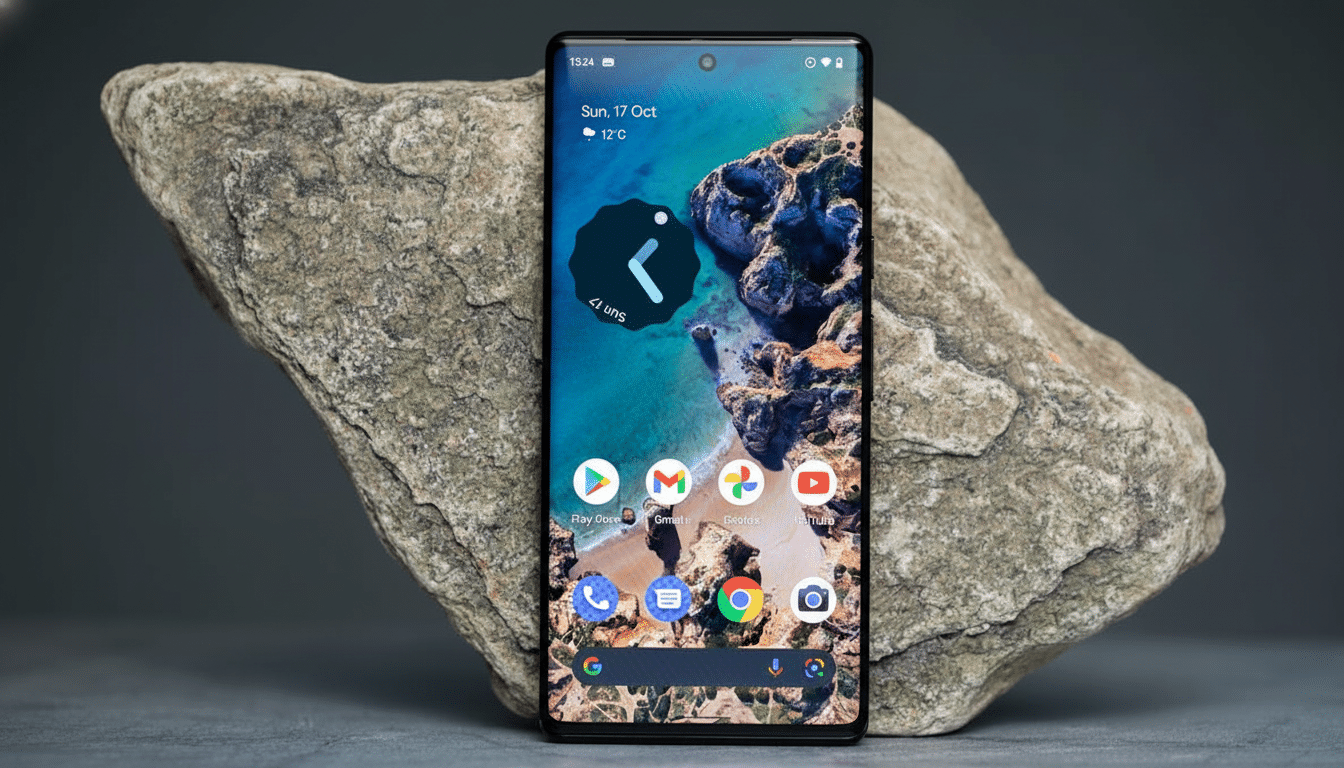Nothing teamed up with Arun Maini, also known as MrWhoseTheBoss, to dream up a “dream phone” that amalgamates technophile wish lists with flagship-grade hardware.
It’s not a real thing — Nothing has produced renders and a spec sheet, not a prototype — but it serves as an illuminating glimpse into what fan-driven priorities would request and what it would take to deliver them.

Design That Collides Nostalgia And Materials Science
The concept phone leans on a distinct visual aesthetic: a Pixel 6-style camera bar spanning the back and geometric patterning that evokes the sci‑fi minimalism of the aborted Turing Phone. A micro‑curved display, titanium body, and sapphire glass front and back hint at premium intentions while also indicating (at least some) robustness — scratches aside.
Sapphire is known for its hardness on the Mohs scale and is therefore highly resistant to scratches, but it’s also more brittle than tempered glass. That tradeoff is a story that repeats itself in the world of luxury wristwear and some experiments in high-end smartphones — and for all the more premium options on paper, it’s probably why your ordinary flagship still swears by advanced Gorilla Glass formulations.
An Overview of the Dream Phone’s Blueprint and Goals
For performance, the dream device demands a high-end Snapdragon 8 Elite Gen 5 chipset, as well as an OLED panel, Qi2 Magnetic Power Profile for snap-on accessories, and a battery capacity of 5,000 mAh. Standardized by the Wireless Power Consortium, Qi2 is like the “magnet alignment” improvements of MagSafe on steroids and has potential to unify accessory ecosystems across Android.
The spec list also keeps old-school convenience alive with a 3.5 mm headphone jack and microSD slot alongside stereo speakers — fan-favorite properties most of its premium phone rivals dropped in order to keep internal space open and make waterproofing easier.
Sony’s Xperia 1 line is a notable exception that retains both, and some gaming-focused phones from ASUS tend to retain the jack for lag-free audio.
A Camera Stack With A Twist And Real-World Trade-Offs
First up, Maini borrowed the beastly quad setup from Xiaomi’s 15 Ultra (known for its big sensors and tuning). But that end-of-year receipt tagged the main, ultrawide, and selfie cameras from Nothing’s own 3a Pro, and featured a 10x optical periscope telephoto. That mash-up is a weird one for a no-compromise concept, especially with the 3a Pro’s lowly 8 MP ultrawide sensor, and is presumably Nothing trying to ground the build in parts it knows and might theoretically be able to source.

The 10x optic itself is an audacious enthusiast choice. Where the Galaxy S23 Ultra had included a 10x periscope, many of today’s flagships have reduced that to modules with half the optical zoom range and higher-resolution sensors (as was done in the Galaxy S24 Ultra and multiple recent Pixels), using computational zoom instead to find the right mix of size, light capture, and cost. A real 10x block introduces complexity and space restrictions that bubble through the rest of the design.
How The Numbers Compare On Cost, Pricing And Scale
Nothing pegged the bill of materials at about $1,163 — which would imply an estimated retail price of around $1,800 and an all‑in project cost north of $26 million when R&D, camera tuning, software development, and expanded customer service are taken into account.
Meanwhile, teardown analysts continue to regularly estimate the cost of mainstream flagship construction significantly lower: For instance, Counterpoint Research estimates a recent top Samsung model costs as little as $450+ to build (read their analysis), and TechInsights has put Apple’s iPhone 15 Pro Max in the low $500s.
This delta is why enthusiast feature sets rarely emerge from corporate review. Sapphire panels, titanium frames, overly large periscope assemblies, and 24/7 multilingual human support all drive up cost; together they bloat it. And that’s even before marketing, logistics, warranty reserves, and retailer margins; the math propels the device firmly into ultra-luxury.
Why Ports And Cards Still Matter To Fans
It comes with the headphone jack and microSD card slot enthusiasts demand, two things that were offed in most of its premium-range competitors. The argument is simple: wired audio gives you zero latency and no compromises from a codec standpoint, while expandable storage fits nicely with huge video libraries or ways to have offline media. But both compete against space needed for larger sensors, vapor chambers, and battery cells; they’re also among the first to get chopped should industrial design need to clamp down.
A Concept That Also Doubles As A Reality Check
As a design exercise, the MrWhoseTheBoss dream phone is on point. It looks unique, it does a handy job of backing up a workhorse 5,000 mAh battery with modern magnetic charging, and it bangs the drum for enthusiast features that mainstream brands have let slide. It’s a reminder of the unforgiving realities of physics, sourcing, and margins — all the more so for a relative upstart manufacturer without the economies of scale enjoyed by industry giants.
One takeaway is not so much “build this exact phone” as it is: be transparent about the trade-offs. With Qi2 on the horizon to further extend the accessory ecosystem and periscope optics only gaining momentum, there’s an opportunity for companies to bring back some wish-list features without blowing up their bill of materials. For now at least, this idea is a well thought-out north star and not a shipping product — and a reminder that you can’t spec sheet your way out of trouble.

